As you want to buy a Air Purifier and searching for “What to Consider When Buying an Air Purifier” this guide will help you to understand it. Clean and healthy indoor air is now must. Whether you suffer from allergies, want to reduce pet odors or simply breathe fresher air, air purifiers are a important addition to any home. However, choosing the right air purifier can be a confusing task as we have multiple options available. We will navigate through the factors to consider when buying an air purifier, so you can make an informed decision about it.
Indoor air quality is not always as clean as we might think. Dust, pollen, pet dander, smoke and volatile organic compounds (VOCs) are just a few potential pollutants that can linger in our homes. These contaminants can increase allergies, asthma and other respiratory issues. That’s where air purifiers come in. They work by drawing in air, trapping particles and then releasing clean, purified air back into your living space.
You can also go through our article on selecting the right air purifier for more undersanding.
In Quick recap if you dont have time to read all :
- Identify Your Concerns: Figure out what specific air quality issues you want to address, like allergies, odors, or pollution.
- Consider Room Size: Choose an air purifier that matches the size of the room where you’ll use it, ensuring efficiency.
- Know Filtration Technology: Understand different filter types like HEPA for particles or activated carbon for odors and choose accordingly.
- Factor in Filter Replacement Costs: Consider long-term expenses like filter replacements and check for affordable options.
- Check Noise Levels: Ensure the purifier’s noise levels are suitable for your space, especially if you plan to use it in bedrooms or quiet areas.
- Evaluate Energy Efficiency: Look for energy-efficient models to save on electricity bills and reduce environmental impact.
- Consider Air Quality Sensors: Advanced models with sensors can automatically adjust settings based on air quality, providing hands-off maintenance.
- Assess Portability and Placement: Decide if you need a portable model and choose placement wisely for optimal performance.
- Check Design and Aesthetics: Select a purifier that fits your decor and personal preferences, considering various design options available.
- Explore Additional Features: Look into extra functionalities like smart features or customizable settings to enhance your air purification experience.

Understanding Your Needs Before Buying Air Purifier
What to Consider When Buying an Air Purifier is a critical question, and the key to answering it lies in understanding your unique circumstances.
1. Identifying Your Concerns
The first step in “What to Consider When Buying an Air Purifier” is to identify your specific concerns. Are allergies your main issue or do you need to eliminate pet odors? Are you in an area with high outdoor pollution levels or is your concern mainly with indoor pollutants like dust and mold? Understanding your unique needs will help you narrow down your choices and find an air purifier tailored specific to your situation.
- Assess Your Specific Air Quality Concerns: Take a moment to think about what air quality issues you want to address. Are you primarily concerned about allergens like pollen, pet dander, or dust? Or is it smoke and odors that bother you the most? Identifying your specific concerns will help you choose an air purifier tailored to your needs.
- Consider Health Conditions, Allergies, or Sensitivities: If you or your family members have health conditions like asthma or allergies, it’s crucial to consider air purifiers that can effectively remove allergens from the air. Likewise, if you’re sensitive to odors or chemicals, you’ll want a purifier equipped to deal with these pollutants.
- Different Types of Pollutants and Their Effects: Be aware of the various types of pollutants that can affect indoor air quality. These may include common allergens, airborne viruses, bacteria, smoke, and volatile organic compounds (VOCs) from household products. Understanding the potential effects of these pollutants on your health can guide your choice of an air purifier designed to combat them.
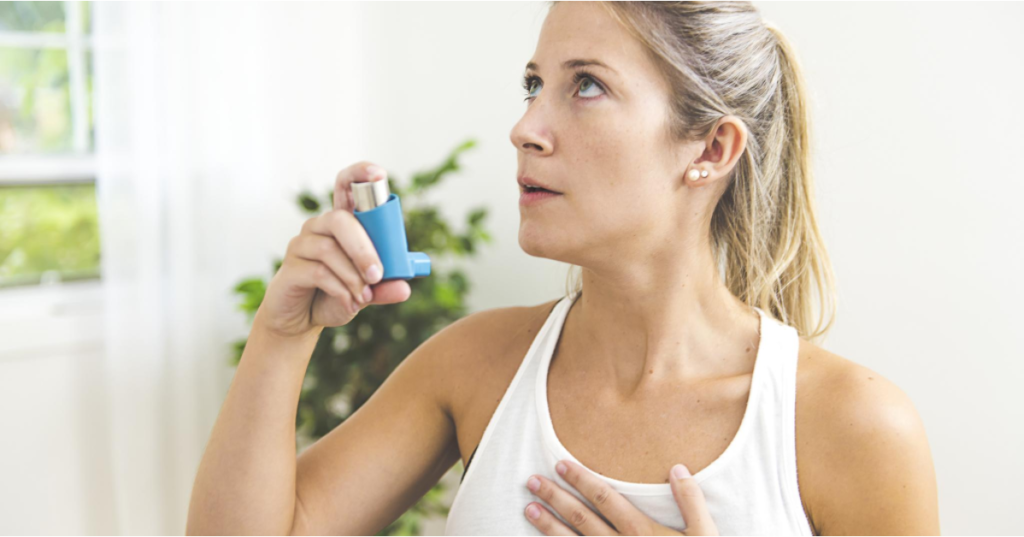
2. Room Size is important consideration
The second step in “What to Consider When Buying an Air Purifier” is to consider room size. Air purifiers come in various sizes and it’s essential to match the purifier’s capacity to the room size where you plan to use it. A purifier designed for a small bedroom won’t be as effective in a spacious living room. Check the product specifications for information on the purifier’s coverage area to ensure it can handle the volume of air in your intended space.
Room Size and Coverage
Selecting the right air purifier requires ensuring it’s the right size for your space. Here’s why it matters and how to get it right:
- Importance of Choosing the Right Size: Imagine trying to cool a large room with a small fan. It won’t work effectively. The same principle applies to air purifiers. Choosing a purifier that matches your room size ensures it can clean the air efficiently. An undersized purifier may struggle to keep up with pollutants, while an oversized one might be overkill and consume unnecessary energy.
- Calculating the Right Purifier Size: Fortunately, there’s a straightforward way to calculate the right purifier size for your room. Measure the room’s length and width in feet and multiply these numbers to find the square footage. Once you have that, check the purifier’s Clean Air Delivery Rate (CADR) – a number that indicates how much air it can clean per minute. Ideally, the CADR should be at least two-thirds of your room’s square footage for effective purification.
- Examples and Recommendations: Let’s say your bedroom is 12 feet by 12 feet, making it 144 square feet. To effectively clean the air in this room, you’d want an air purifier with a CADR of at least 96 (144 x 2/3). If you have a larger living room of 300 square feet, look for a purifier with a CADR of 200 or more.The Environmental Protection Agency (EPA) provides the following recommendations regarding minimum CADR ratings based on room size:
| Room Area (Square Feet) | Minimum CADR (CFM) |
|---|---|
| 100 | 65 |
| 200 | 130 |
| 300 | 195 |
| 400 | 260 |
| 500 | 325 |
| 600 | 390 |
3. Filtration Technology
The third step in “What to Consider When Buying an Air Purifier” is Filtration technology. Different air purifiers use various filtration technologies, each with its own strengths. The most common type is the High-Efficiency Particulate Air (HEPA) filter, which is excellent at capturing tiny particles like dust and pollen. Activated carbon filters are great for tackling odors and chemicals, making them ideal for pet owners and kitchens. If you’re concerned about germs and bacteria, UV-C filters can be effective at destroying these microorganisms. Understanding the type of filtration you need is crucial when making your selection.
When choosing an air purifier, one of the most critical factors to consider is its filtration system. Here’s why it matters and what you should know:
- Significance of the Filtration System: It determines how effectively the purifier can capture and remove airborne pollutants. A robust filtration system ensures cleaner and healthier air in your home.
- Understanding the HEPA Standard: HEPA stands for High-Efficiency Particulate Air. It’s a gold standard in air filtration. HEPA filters can trap tiny particles, even as small as 0.3 microns, which includes dust, pollen, pet dander, and even some bacteria and viruses. When choosing an air purifier, look for one with a HEPA filter for optimal performance.
- Additional Features: Some air purifiers come with extra features like pre-filters and activated carbon filters. Pre-filters capture larger particles, extending the lifespan of the main filter. Activated carbon filters are excellent at removing odors and chemicals from the air, making your indoor environment fresher.
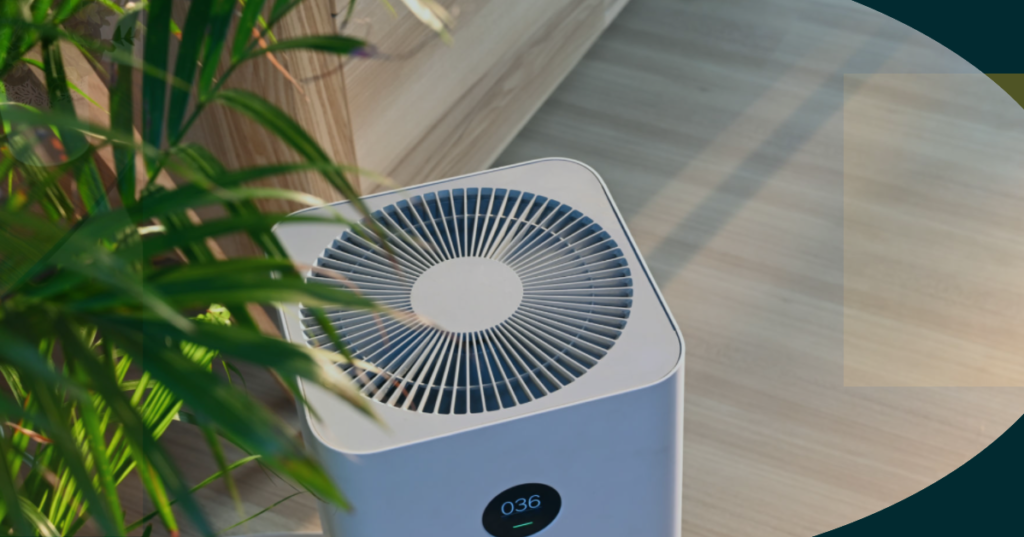
4. Filter Replacement Costs
The fourth step in “What to Consider When Buying an Air Purifier” is to consider Filter replacement costs.While many air purifiers have reasonable upfront costs, it’s essential to consider long-term expenses. Filters require replacement at regular intervals, typically every 6 to 12 months. These replacement costs can add up, so it’s wise to choose a purifier with readily available and affordable replacement filters.
- Regular Maintenance: Like any appliance, air purifiers require regular maintenance to work effectively. This includes cleaning the exterior, checking the filter, and ensuring the vents are clear.
- Filter Replacement: Filters have a lifespan, and they need to be replaced periodically. The frequency varies depending on the purifier and usage. It’s essential to follow the manufacturer’s recommendations for filter replacement. Keep in mind the cost of replacement filters when budgeting for your air purifier.
5. Noise Levels
The fifth step in “What to Consider When Buying an Air Purifier” is to Consider where you plan to place your air purifier. If it’s intended for a bedroom or a quiet workspace, you’ll want a model with low noise levels. Check the product’s noise rating in the specifications to ensure it won’t disturb your peace and quiet.
- Considering Noise Levels: Noise can be a concern, especially if you plan to use the air purifier in your bedroom or a quiet space. Check the purifier’s decibel (dB) rating to get an idea of how loud it can be. Look for models that offer quieter operation or even a special “sleep mode.”
- Optimal Placement: Where you put your air purifier can affect its performance. It’s best to place it in the room where you spend the most time. For bedrooms, look for bedroom-friendly purifiers designed to operate quietly while you sleep.
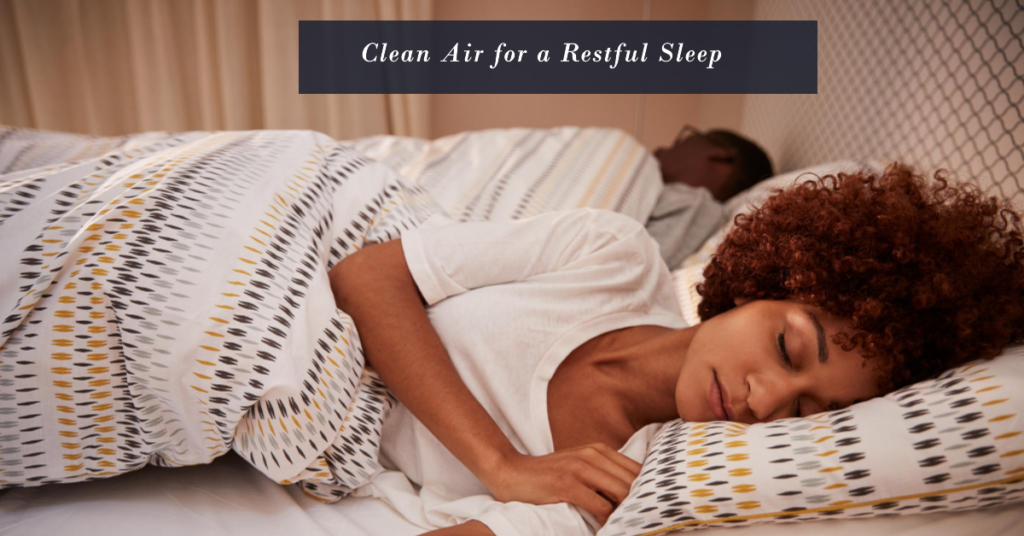
6. Energy Efficiency
The sixth step in “What to Consider When Buying an Air Purifier” is to consider is energy efficiency. Some air purifiers can consume a significant amount of electricity, which can lead to higher energy bills. Look for models with energy-efficient features or certifications, such as ENERGY STAR, to reduce your environmental footprint and save on energy costs.
- Energy Consumption: Air purifiers are energy-efficient devices, but their energy consumption can still add to your electricity bill. Look for models with energy-saving features like low-power modes or timers.
- Energy Star Certification: To save on energy costs, consider air purifiers with Energy Star certification. This label indicates that the purifier meets strict energy efficiency guidelines set by the Environmental Protection Agency (EPA).
7. Air Quality Sensors
The seventhstep in “What to Consider When Buying an Air Purifier” is to consider fot air quality sensors. Some advanced air purifiers come equipped with air quality sensors. These sensors continuously monitor the air in your space and adjust the purifier’s settings accordingly. When pollutants are detected, the purifier automatically increases its fan speed to filter the air more effectively. Air quality sensors can be particularly beneficial if you want a hands-off approach to maintaining clean indoor air.
8. Portability and Placement
The eighth step in “What to Consider When Buying an Air Purifier” is to consider where you plan to place your air purifier. If you need the flexibility to move it from room to room, look for a lightweight and portable model with handles or caster wheels. Some purifiers are designed to fit on tabletops, while others are floor-standing units. Choose one that suits your space and lifestyle.
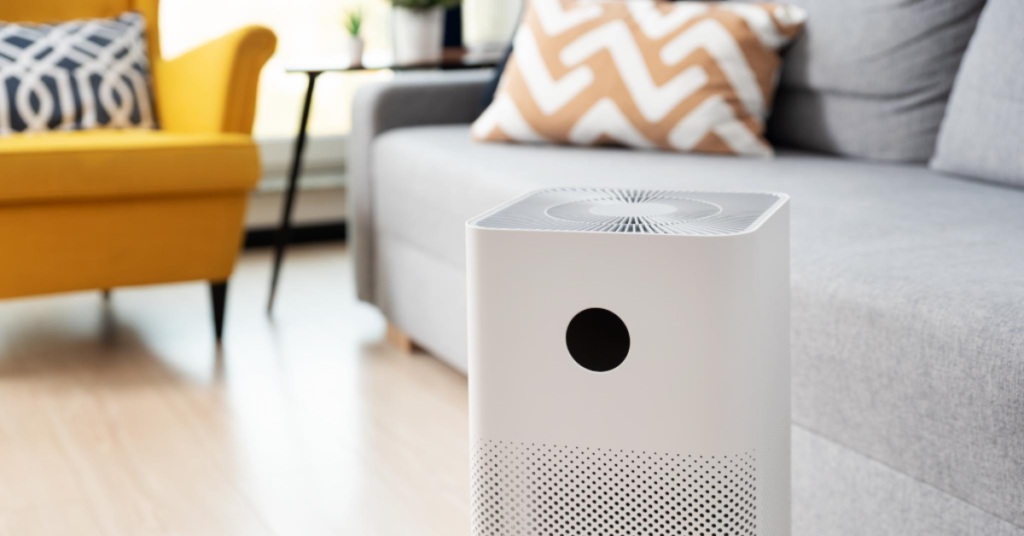
9. Design and Aesthetics
The ninth step in “What to Consider When Buying an Air Purifier” is to check design and asthetics. Air purifiers come in various designs, from sleek and modern to more traditional styles. Since these devices will be a part of your living space, it’s essential to select one that complements your decor. Some purifiers even offer customizable panels, allowing you to change their appearance to match your preferences.
10. Additional Features and Technology
The tenth step in “What to Consider When Buying an Air Purifier” is to check if Modern air purifiers often come equipped with advanced features and technology to enhance their performance and user convenience.
- Smart Features and Connectivity Options: Some air purifiers are equipped with smart features that allow you to control them remotely via smartphone apps. They may also be compatible with voice assistants like Amazon Alexa or Google Assistant, enabling voice commands for operation.
- Air Quality Sensors and Auto-Adjustment Settings: Many high-end air purifiers are equipped with built-in air quality sensors. These sensors monitor the air and provide real-time feedback on the device’s status. When pollutant levels rise, these purifiers can automatically adjust their fan speed and purification settings to maintain optimal air quality.
- Unique Technologies Offered by Specific Brands: Different brands often incorporate unique technologies into their air purifiers. For instance, some brands use proprietary filtration technologies that claim to be more effective at capturing specific pollutants. Others may focus on energy efficiency, noise reduction or long-lasting filter designs. It’s essential to research and compare these technologies to find the best fit for your needs.
11. Budget Considerations
The eleventh step in “What to Consider When Buying an Air Purifier” is budget considerations. It is a crucial factor. Here’s what you need to know:
- Price Range: Air purifiers come in a wide price range, from budget-friendly options to high-end models. Typically, prices can range from as low as $50 to well over $500. The cost depends on factors like brand, features and the type of technology used.
- Performance vs. Price: It’s important to note that higher prices don’t always guarantee better performance. A more expensive air purifier may have advanced features, but its effectiveness in purifying the air may not significantly differ from a mid-range model. Therefore, it’s vital to strike a balance between your budget and the specific air quality concerns you want to address.
- Recommendations for Various Budget Levels: To accommodate different budgets, it’s a good practice to offer recommendations for air purifiers across various price ranges. This ensures that readers can find a suitable option regardless of their financial constraints.
12. Brand Reputation and Reviews
The twlefth step in “What to Consider When Buying an Air Purifier” is Brand reputation and product reviews play a crucial role in making an informed decision when buying an air purifier.
- Researching Brands: Emphasize the importance of researching the reputation of air purifier brands. Established and reputable brands often provide better customer support, warranties and product reliability. Brands with a history of manufacturing quality products are generally a safer choice.
- Reading Reviews and Recommendations: Encourage readers to read user and expert reviews. Real-world experiences from other users can provide valuable insights into a product’s performance, reliability and durability. Additionally, seek recommendations from friends, family or online communities who have experience with air purifiers.
- Reliable Sources for Product Reviews: Suggest reliable sources for product reviews, such as consumer advocacy websites, independent testing organizations and trusted online retailers. These sources can provide unbiased assessments of air purifiers’ performance and features, helping readers make informed choices.
What to know before buying air purifier
Types of Air Purifiers
Air purifiers come in various types, each with its own set of features and mechanisms designed to tackle specific pollutants. Understanding these types will help you choose the right one to meet your indoor air quality needs.
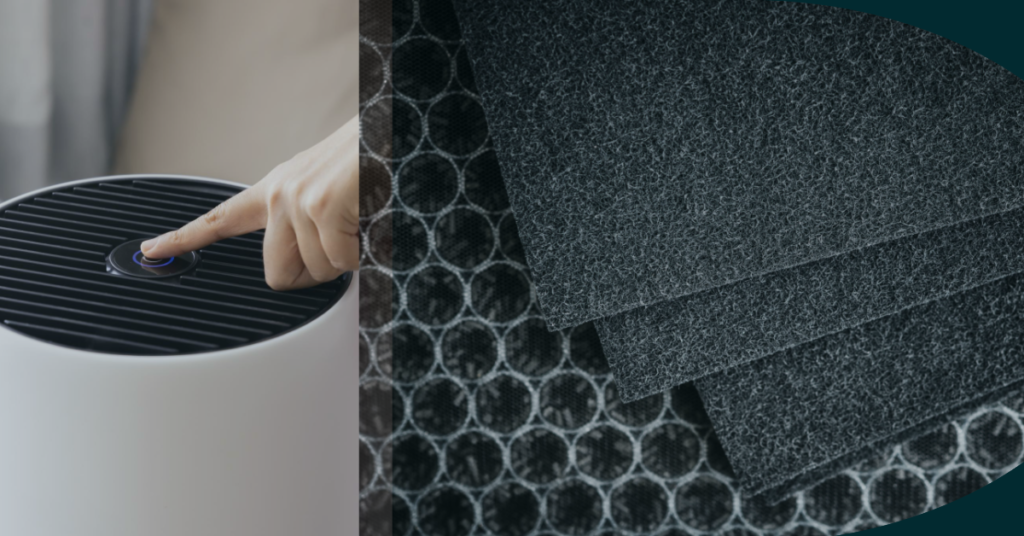
- HEPA Air Purifiers:
- High-Efficiency Particulate Air (HEPA) purifiers are best known for their effectiveness in removing airborne particles. They can capture particles as small as 0.3 microns with an efficiency of 99.97%.
- Pros:
- Exceptional at removing allergens like pollen, dust mites and pet dander.
- Highly efficient in reducing indoor air pollution.
- Ideal for those with allergies or asthma.
- Cons:
- May not effectively eliminate volatile organic compounds (VOCs) or odors.
- Often require regular filter replacements.
- Activated Carbon Air Purifiers:
- Activated carbon purifiers uses a special type of carbon that can adsorb odors, gases and VOCs. They work through a process called adsorption, where pollutants are trapped on the carbon’s porous surface.
- Pros:
- Excellent for removing odors from cooking, pets and smoke.
- Effective against harmful gases like formaldehyde and ammonia.
- Cons:
- Less effective at capturing particulate matter.
- Carbon filters need replacement over time.
- UV (Ultraviolet) Air Purifiers:
- UV air purifiers use ultraviolet light to sterilize and kill different microorganisms such as bacteria, viruses and mold spores. They are often used in conjunction with other filtration methods.
- Pros:
- Highly effective at neutralizing harmful microorganisms.
- Can complement HEPA filters to provide comprehensive purification.
- Cons:
- Less effective against larger particles and allergens.
- Do not remove particulate matter or gases.
- Ionic Air Purifiers:
- Ionic or ionizer purifiers release negatively charged ions into the air, which attach to and precipitate positively charged particles like dust and allergens. These particles then fall to the ground or surfaces and can be removed during cleaning.
- Pros:
- Effective at removing small particles from the air.
- Can improve air quality in terms of visible dust and allergens.
- Cons:
- Some ionizers produce ozone, which can be harmful in high concentrations.
- Not suitable for removing odors or gases.
- Ozone Generators:
- Ozone generators intentionally produce ozone, which is intended to react with and neutralize pollutants in the air. However, ozone can be harmful to human health, so these purifiers are controversial and less common.
- Pros:
- Can neutralize strong odors and disinfect the air.
- May be used in unoccupied spaces.
- Cons:
- Ozone can be harmful to the respiratory system.
- Not recommended for continuous use in occupied areas.
It’s essential to choose an air purifier type that aligns with your specific air quality concerns. Some models combine multiple technologies to provide comprehensive purification. Consider the pollutants you want to target and your personal health needs when making your selection.
Conclusion on “What to Consider When Buying an Air Purifier“
Selecting the right air purifier is essential for improving your indoor air quality and overall well-being. In this guide on What to Consider When Buying an Air Purifier we saw various aspects like By identifying your specific needs, understanding room size requirements and choosing the right filtration technology, you can create a healthier environment in your home. Consider long-term costs, such as filter replacements, noise levels and energy efficiency, to ensure your air purifier remains a valuable addition.
Keep in mind additional features like air quality sensors, portability, design and extra functionalities that can further enhance your air purification experience. With the right air purifier, you can breathe easier, reduce allergies and enjoy the benefits of cleaner indoor air.
FAQs
What should I look for when buying an air purifier?
When purchasing an air purifier, it’s crucial to consider several factors. First, assess the size of the room where you plan to use it. Ensure the air purifier is suitable for that room’s dimensions. Second, check the type of filter it uses. High-Efficiency Particulate Air (HEPA) filters are renowned for their effectiveness in removing airborne particles. Third, think about noise levels and where you’ll place the purifier for optimal performance. If you need a quiet environment, look for models with quieter modes. Also, consider models with filter replacement indicators to make maintenance easier. Lastly, explore additional features like air quality sensors, which can automatically adjust settings based on your indoor air quality.
What to avoid when buying an air purifier?
While shopping for an air purifier, there are certain pitfalls to avoid. Don’t choose an air purifier that’s too small for the room you intend to use it in, as it won’t effectively clean the air. Additionally, be mindful of filter replacement costs, which can add up over time. If you require a quieter environment, avoid air purifiers with noisy settings that could disrupt your peace. Lastly, pay attention to customer reviews and brand reputation to steer clear of models with poor performance or durability issues.
What features should a good air purifier have?
A quality air purifier should come equipped with several key features. Firstly, it should have a filter that suits your specific air quality needs, whether that’s HEPA for particles or activated carbon for odors and gases. Adjustable fan speeds are valuable for tailoring the purification process to your preferences. Look for air purifiers with air quality sensors and auto-adjustment settings, which can optimize performance based on real-time conditions. A timer function can add convenience by allowing you to set operating hours. Some individuals may prefer air purifiers with smart features and connectivity options for remote control and monitoring.
What is the most important thing in an air purifier?
The most critical element in an air purifier is its filtration system. It serves as the primary mechanism for removing contaminants from the air. High-Efficiency Particulate Air (HEPA) filters are highly regarded for their ability to capture particles as small as 0.3 microns, which includes common allergens like dust, pollen, and pet dander. Additionally, activated carbon filters are essential for adsorbing odors and gases, making them crucial if you’re dealing with cooking smells or tobacco smoke. Some air purifiers also feature pre-filters, which can prolong the life of the main filter by capturing larger particles.
How do you know if you should get an air purifier?
Determining whether you should invest in an air purifier depends on your specific circumstances. If you suffer from allergies or asthma, an air purifier can help reduce airborne allergens and improve your indoor air quality. It’s also beneficial if you live in an area with high outdoor pollution levels, as it can provide a sanctuary of clean air at home. Pet owners and smokers may find air purifiers particularly useful for removing pet dander and tobacco smoke particles. Even if you don’t have specific health concerns, an air purifier can enhance overall indoor air quality by reducing dust and other airborne pollutants.
What to know about buying air purifiers?
When delving into the world of air purifiers, there are several key aspects to understand. Begin by assessing your unique air quality needs, considering factors like allergies, sensitivities, and the presence of specific pollutants. Measure the size of the room where you intend to use the air purifier to ensure you select an appropriately sized unit. Familiarize yourself with different types of filters, such as HEPA and activated carbon, and their respective functions. Take into account factors like noise levels and placement for optimal effectiveness and convenience. Finally, research brands, read customer reviews, and seek recommendations from reliable sources to make an informed purchase decision.
DheerajSonwane is a dedicated writer with expertise in air purification technologies. He focuses on providing well-researched content to help readers improve indoor air quality in homes and businesses. As the lead writer at AirPurifierMaster.com, Dheeraj offers practical advice his insightful reviews guide individuals in choosing the best air purifiers for their needs.

